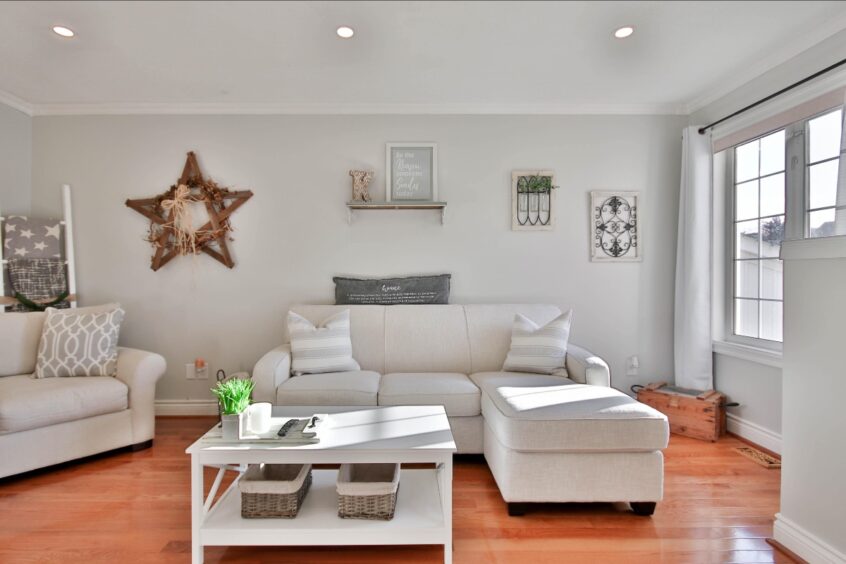We tend to get used to our own clutter, as it rarely appears all at once. Over time, each member of the household finds new, often unique, places to set their belongings and…tada! You have a lived-in house. It feels comfortable to those who live there, but it’s a real turnoff for someone looking to buy the home.
The problem with clutter isn’t just that it hurts the eyeballs of outsiders, but also that it can hide a listing’s best features, such as perceived room sizes and available storage space.

Clutter Is a Real Estate Issue
“Clutter eats up equity more that anything else. Why? Because buyrs have a hard time seeing through the clothes draped all over rooms, unmade beds, knick-knacks everywhere, magazines, newspapers, trophies, collections, dishes all over the kitchen counters, too many scatter rugs…..shall I go on? And if left that way the listing price will drop…and that is why staging a property inside and out pays off.”
– Barb Schwarz, the founder of Home Staging
First impressions matter. Staging is visual merchandising for your home so that you can sell it quickly and for more money. In fact, staged homes sell 73% faster than emplty homes.
Redfin

Clutter Is Solvable
As professional home stagers, we work with homeowners to respectfully sort, hide, or rearrange their belongings in a way that is easy to maintain or reset for each new showing. Occupied staging doesn’t have to be stressful or make the homeowner feel like they have to tip-toe around their own house.
Here are just a few of the non-clutter practices we follow:
- Nothing (except furniture) sits on the floor, as that will decrease perceived square footage.
- Only one area rug per room, or two if it’s an open concept space, for the same reason.
- Empty tables and countertops, aside from styled decor elements.
Listing a home for sale? We can help you get it ready for market.
If you have a mudroom, check out our post on Tips to Keep Your Mudroom Tidy & Pretty.
Curate the bookshelves. Remove 25% of your book collection entirely, and then rearrange what’s left so that some books are lined up vertically, while others are stacked horizontally.
Real Simple

